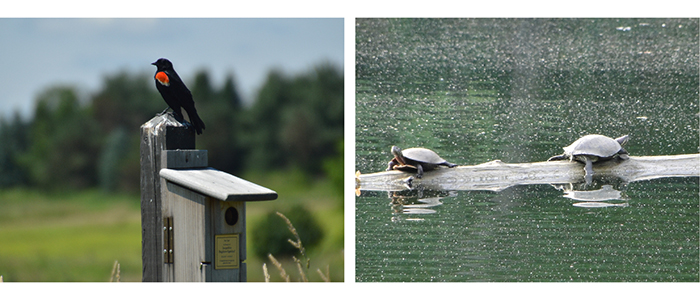WILDLIFE VIEWING
Whether you’re an experienced birder or simply enjoy observing wildlife, Mill Creek MetroParks offers excellent opportunities to view a wide variety of species—from butterflies to bald eagles! Our parks and preserves are home to diverse habitats that attract an array of birds, mammals, amphibians, and insects. Whether you’re hiking along the trails, strolling through meadows, or exploring our woodlands and wetlands, you’re bound to encounter something interesting.
Mill Creek MetroParks is known for its birdwatching, with species ranging from migratory songbirds to majestic raptors. Many visitors spot great blue herons, woodpeckers, and even the elusive red-shouldered hawk. Wildlife enthusiasts can also observe animals like deer, foxes, squirrels, and the occasional wild turkey. With a variety of ecosystems, including meadows, woodlands, wetlands, and ponds, there’s always something new to discover.
Whether you’re a seasoned wildlife photographer or simply enjoy the beauty of nature, Mill Creek MetroParks provides countless chances to connect with wildlife in their natural habitats.




